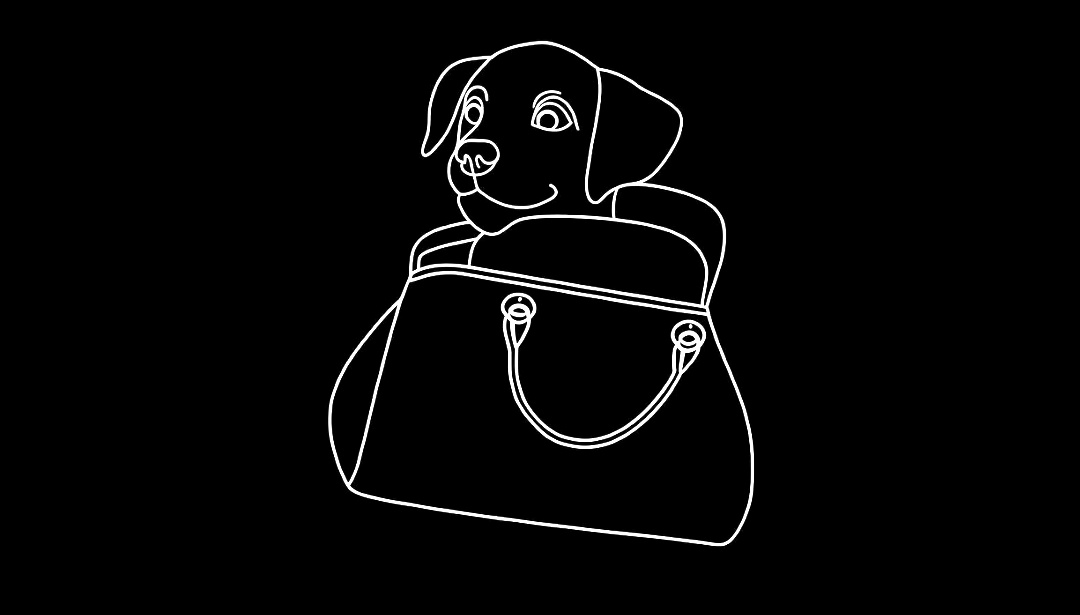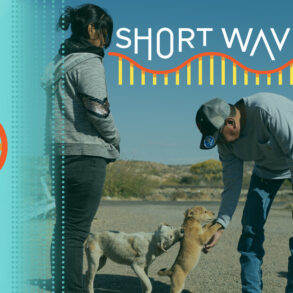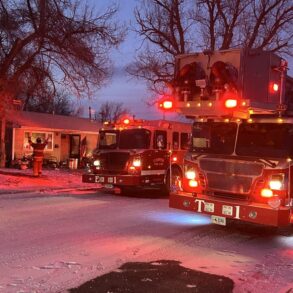A black dog, a medium-sized mutt named JT, lay on his stomach in the yard outside the Maui Humane Society’s shelter in Puʻunēnē, his back legs splayed out and his long, pink tongue hanging from the side of his mouth.
“Energetic, chew toy enthusiast, treat-motivated,” Layli Gonzalez, a staff member at the shelter, said about JT. “He enjoys affection. He loves his tennis balls.”
But in the year and three months since JT was found tied to a tree near Lahaina, shortly after the deadly wildfire, he has bounced between the shelter and foster homes. That’s become more common, said Victoria Ivankic, the Maui Humane Society’s director of marketing and communications. As of last month, dogs remained in the shelter’s care an average of almost four months, up from about two and a half the previous January.
Immediately after the August 2023 fires displaced 12,000 people on Maui, animal welfare groups across the country stepped in to help with pets who had nowhere to go. But since then, the Humane Society has struggled to find people who will take animals in, said Nikki Russell, the organization’s chief of operations. People are struggling to find housing, she said, and pet-friendly units are even harder to come by.
Now the shelter is way over capacity, particularly with dogs. Although the shelter takes in many more cats, dogs require additional space and individualized care.
“We can provide medical care, we can provide spay and neuter services, we can provide everything except pet-friendly housing.”
Nikki Russell, Maui Humane Society
The shelter reached a breaking point on Jan. 13, Ivankic said, when it housed about 75 dogs even though it has just 43 kennels. Some dogs were doubled — or tripled — up in kennels; others were kept in offices. About 60 more were in foster homes, where they remain the responsibility of the Humane Society.

With so many dogs in their care, “that is when we have to look at ourselves and ask, are we warehousing dogs, or are we really saving them?” Russell said.
On Jan. 14, the organization announced that it might need to euthanize adoptable animals to make space. The community responded quickly; within a week, 30 dogs had been adopted and 65 had gone to foster homes, according to a social media post by the organization.
“It feels better now because there are less animals directly in our care,” Russell said, “but we still haven’t addressed the underlying issues.”

Fewer Pet-Friendly Homes on Maui
Even before the fire, the most common reason people cited for giving up their pets was difficulty finding housing, Russell said. The island’s housing crisis has gotten worse since.
People didn’t give up their pets all at once. The Maui Humane Society took in animals from people who tried to care for them while living out of their cars, or who only surrendered their pets because their temporary housing didn’t allow them. Some people left their animals when they moved away from the island because they had lost their homes or jobs, Russell said. Families that had fostered animals faced the same pressures.
“The lasting impact is the amount of pet-friendly homes that were lost,” Russell said. “We can provide medical care, we can provide spay and neuter services, we can provide everything except pet-friendly housing.”
The housing shortage has hindered would-be pet owners who didn’t lose their homes, too.
“Even if you find pet-friendly housing, no housing situation feels secure. What happens if you have a pet and you lose your pet-friendly housing?”
Scott North, Maui resident
Years ago, when Scott North and his wife lived in Utah, they had a miniature Jack Russell Terrier named Nitro. The couple would love to give their three daughters, ages 13, 10 and 5, the experience of owning a pet.
But “housing in general is hard right now, and pet-friendly housing is harder,” North, 50, said. “Even if you find pet-friendly housing, no housing situation feels secure. What happens if you have a pet and you lose your pet-friendly housing?”
North had taken his kids to the shelter in late January so their daughter Austin could celebrate her 10th birthday by hanging out with the cats in the shelter’s “cat ohana.” Cats of all ages slept in cat towers, pounced on cat toys and looked curiously at the family.
“It makes me sad,” Austin said about her family’s inability to adopt a pet. She said she would love to eventually have a cat to play with and sleep beside. “I wouldn’t even mind if I had to do most of the cleaning up.”

Mainland Shelters Have Their Own Problems
Because of Hawaiʻi’s isolation, the state’s animal shelters have long been prone to overpopulation, especially after natural disasters such as wildfires or hurricanes.
In the past, Russell said, the Humane Society has been able to transfer animals to shelters and rescue groups on the mainland. But shelters across the country are experiencing overcrowding too, driven in part by rising pet care costs and a veterinarian shortage that has led to fewer animals being spayed or neutered, according to animal welfare groups.
A report by Shelter Animals Count, which tracks animal shelter populations in the U.S., found dog adoptions were down about 13% compared to 2019. The number of animals transported to another shelter or a rescue group dropped substantially and the average shelter stay nearly doubled.
The Maui shelter has reached capacity before, “but we always had a pressure valve and could release it,” Russell said. “Right now it feels like we don’t have that.”
When the Humane Society does find an organization to take animals, they’re often farther away, such as in Illinois.
“We’re sending them to places that we never thought we’d have to,” she said, “because we always had our partners right on the West Coast.”
Longer Shelter Stays Make Adoption Harder
Living at the shelter is stressful for animals despite the efforts of the staff and volunteers. Overcrowding makes the environment even more overwhelming.
The constant barking and the lack of space stresses dogs out, and many deteriorate over time, Russell said. They spin around, rip out their paws or become overly excited at the sight of other dogs or people. Staff must move them to the back, where potential adopters are less likely to see them.
Many of the animals that have been there the longest are dogs who can’t live with other pets for medical or behavioral reasons, Russell said, and the longer an animal stays in the Humane Society’s care, the greater the chance of developing those problems. Animals, she said, don’t belong in cages.
“I see these animals come to us and arrive as adoptable animals, and then they’re here long enough that they’ve become so reactive with other dogs that now they have to be adopted into one-dog homes,” Russell said.
Eventually some dogs’ conditions become severe enough that staff must consider euthanizing them, Russell said — an agonizing decision.
The Maui Humane Society posts information about animals facing the possibility of euthanasia on its “Urgent and at Risk” Facebook group.

Dogs at risk so far this year included Stewart Little, a 5-year-old described in a Facebook post as an affectionate “big boy” but who mentally declined upon arrival at the shelter in January; Rell Sunn, who displayed problems meeting people and dogs but loves toys and going for walks; and Cowie, a medium-sized black dog who, despite her difficult past, is affectionate and loyal if people are patient enough to earn her trust.
Rell Sunn was adopted in late January after being with the Humane Society since June 2024. Stewart Little went home with a new owner who stepped up just in time, according to the shelter. As of Tuesday, Cowie was still waiting for someone to take her home. She’s been there since 2023, the longest of any dog at the shelter.
Civil Beat’s coverage of Maui County is supported in part by a grant from the Nuestro Futuro Foundation.

Sign up for our FREE morning newsletter and face each day more informed.
This post was originally published on this site be sure to check out more of their content.








































